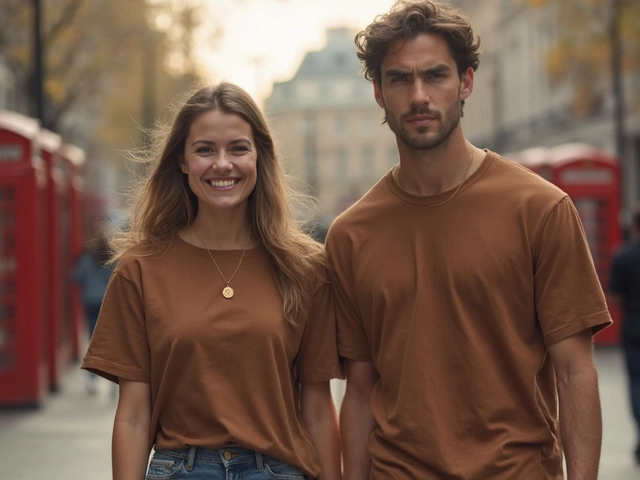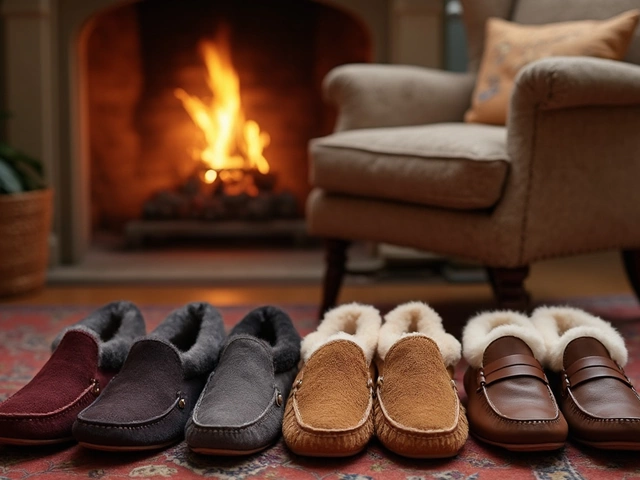Are Activewear and Sportswear the Same? Here’s the Real Difference

- Cleo Fairchild
- 1 November 2025
- 0 Comments
Activewear vs Sportswear Checker
How to Use This Tool
Select features
Answer 3-5 questions about your clothing's characteristics
Get your result
The tool will analyze your selections and determine if it's sportswear or activewear
Get recommendations
See why this classification matters for your activities
Select your clothing features:
Ever bought a pair of leggings thinking they were for the gym, only to find out they’re more suited for coffee runs? You’re not alone. The line between activewear and sportswear is blurrier than ever - thanks to influencers, fast fashion, and the rise of ‘athleisure’. But if you’re trying to pick the right gear for training, competition, or just comfort, mixing them up could cost you performance, durability, or even your sanity.
What Exactly Is Sportswear?
Sportswear is gear made for actual sports. Think jerseys, cleats, running shorts, tennis skirts, swimwear, and hockey pads. These items are engineered for one thing: helping you perform better in a specific physical activity. The fabric might wick sweat in a way that prevents chafing during a 10K. The cut might allow full shoulder rotation for a tennis serve. The seams are reinforced because you’re diving for a ball or sprinting through mud.
Brands like Nike, Adidas, and Under Armour design sportswear with input from athletes and biomechanics labs. A basketball jersey isn’t just a t-shirt with a logo - it’s made with stretch panels where your body moves most, moisture management zones, and ventilation that keeps you cool during high-intensity play. It’s built to handle impact, friction, and extreme movement.
Sportswear often follows official rules too. A soccer uniform must meet FIFA standards. A cycling kit has to comply with UCI regulations. You can’t just wear any tight outfit and call it sportswear - it has to be fit for purpose.
What Is Activewear?
Activewear is what you wear when you’re active - but not necessarily competing. It’s the leggings, hoodies, crop tops, and sneakers you throw on for yoga, a walk in the park, or even just running errands. It’s designed for comfort, flexibility, and style, not peak performance.
Activewear thrives on versatility. A pair of high-waisted leggings might have a pocket for your phone, a flattering cut for Instagram, and a fabric that feels like a second skin. But if you tried to do 50 burpees in them, the seams might roll, the waistband might dig in, or the material could lose its shape after a few washes. That’s not a defect - it’s by design.
Brands like Lululemon, Alo, and Gymshark built empires on activewear. They sell the feeling of being fit, not just the function. You don’t need to sweat hard to wear it. You just need to want to look like you do.
Key Differences Between Activewear and Sportswear
Here’s where the confusion clears up:
- Performance vs. Presentation: Sportswear is built to help you win. Activewear is built to help you feel good.
- Material Science: Sportswear uses technical fabrics like polyester blends with moisture-wicking, UV protection, and compression zones. Activewear often uses softer, more casual blends - sometimes even cotton - for comfort over function.
- Construction: Sportswear has flatlock seams, bonded edges, and reinforced stress points. Activewear might have decorative stitching or embellishments that look nice but don’t hold up under heavy use.
- Fit: Sportswear fits snugly to reduce drag and prevent chafing during motion. Activewear fits to flatter - sometimes looser, sometimes tighter - based on trends, not biomechanics.
- Testing: Sportswear goes through lab tests for durability, breathability, and stretch recovery. Activewear is tested on models walking down runways, not on treadmills.
Think of it like this: sportswear is a race car. Activewear is a stylish SUV. Both get you from A to B. But one’s built for the track, and the other’s built for Sunday drives.

When It Matters - And When It Doesn’t
If you’re training for a marathon, playing competitive tennis, or lifting heavy weights, sportswear is non-negotiable. The difference in fabric quality and construction affects your comfort, safety, and even your results. A poorly designed sports bra during high-impact workouts can cause long-term tissue damage. Compression shorts made for running won’t hold up in the gym - and vice versa.
But if you’re doing light yoga, walking the dog, or just lounging around, activewear is perfect. It’s softer, more breathable in casual settings, and often more affordable. You don’t need the technical specs of a triathlon suit to do 20 minutes of stretching.
Here’s a simple rule: if you’re sweating heavily or moving explosively, go for sportswear. If you’re moving gently or just want to look put-together while being comfortable, activewear is fine.
The Rise of Athleisure - And Why It’s Confusing
The term ‘athleisure’ was coined in the 2010s to describe clothing that blends athletic and leisure styles. It’s why you see people wearing leggings to the office, or hoodies to brunch. This trend blurred the lines so much that many brands now market activewear as ‘performance wear’ - even if it’s not tested for performance.
That’s marketing, not science. A $120 pair of leggings from a trendy brand might claim to be ‘performance-grade’ - but if the fabric pills after three washes or the waistband rolls down during squats, it’s not sportswear. It’s just expensive activewear.
Don’t be fooled by buzzwords like ‘compression’, ‘four-way stretch’, or ‘moisture-wicking’ unless you check the fabric content. Real sportswear uses at least 80% synthetic fibers (polyester, nylon, spandex). If it says ‘cotton blend’ or ‘organic cotton’, it’s not built for sweat-heavy activities.

How to Tell Them Apart - A Quick Guide
Before you buy, ask yourself:
- Will I be doing high-intensity movement? If yes → look for sportswear.
- Is the fabric labeled with technical specs? (e.g., ‘Dri-FIT’, ‘Climalite’, ‘CoolMax’) → likely sportswear.
- Does it have flat seams, no visible stitching, or bonded edges? → sportswear.
- Is the price under £30 for leggings? → probably activewear.
- Does it come in pastels, floral prints, or with rhinestones? → activewear.
There’s no shame in wearing activewear. It’s comfortable, fashionable, and great for everyday life. But if you’re serious about your training, don’t settle for style over substance.
What to Buy - Based on Your Needs
Here’s what works for real people:
- For running or HIIT: Nike Pro, Under Armour HeatGear, or Adidas Climacool. Look for seamless construction and sweat-wicking tech.
- For yoga or pilates: Lululemon Align, Alo Yoga, or Sweaty Betty. Soft, stretchy, and flattering - perfect for slow, controlled movement.
- For weightlifting: Gymshark Flex or Reebok Training. These have thicker fabric and support without restricting range of motion.
- For casual wear: Uniqlo, H&M, or Zara’s ‘Active’ lines. Affordable, cute, and fine for walking or errands - just don’t expect them to survive a 5K.
Many people own both. A runner might wear sportswear for training and activewear for recovery days. That’s smart. It’s not about choosing one over the other - it’s about matching the gear to the moment.
Final Takeaway
Activewear and sportswear are not the same. One is built for function. The other is built for feeling. Confusing them leads to discomfort, frustration, or even injury. But understanding the difference helps you spend your money wisely - and move better, whether you’re chasing a personal best or just trying to feel good on a Tuesday morning.
Don’t buy what looks good. Buy what works for your body - and your goals.
Can I use activewear for the gym?
You can, but only for light workouts like yoga, stretching, or walking. For high-intensity training, running, or lifting, activewear often lacks the support, durability, and moisture management of true sportswear. You might find seams rolling, fabric losing shape, or lack of compression causing discomfort.
Is all sportswear expensive?
Not necessarily. While premium brands like Nike and Lululemon charge more, you can find solid sportswear from Decathlon, Amazon Essentials, or even store brands like JD Sports’ own lines. Look for technical fabric labels (polyester, spandex, nylon) and reinforced stitching - not the brand name.
Why do some brands call activewear ‘performance wear’?
It’s marketing. Many brands use terms like ‘performance’ or ‘technical fabric’ to make activewear sound more premium. But unless the product is tested for sweat-wicking, UV protection, or compression levels, it’s just stylish clothing. Always check the fabric content - real performance gear is 80%+ synthetic.
Can sportswear be worn casually?
Absolutely. Many people wear sportswear outside the gym because it’s durable, comfortable, and fits well. A pair of running shorts or a moisture-wicking tee can look great with sneakers and a hoodie. The key is choosing neutral colors and clean designs - not flashy competition gear.
How do I know if my leggings are activewear or sportswear?
Try a squat. If the fabric stretches but doesn’t lose shape, the waistband stays put, and you don’t see through it - it’s likely sportswear. If the waist rolls, the fabric pills, or you feel the seams digging in, it’s activewear. Also check the tag: if it says ‘for yoga and casual wear’, it’s not made for intense training.


